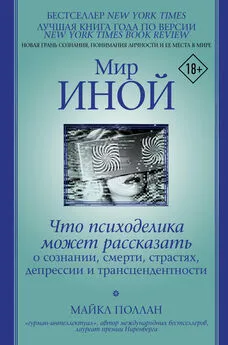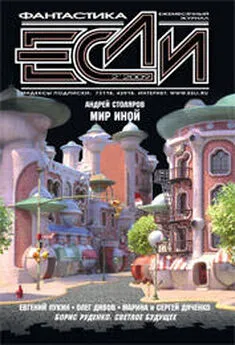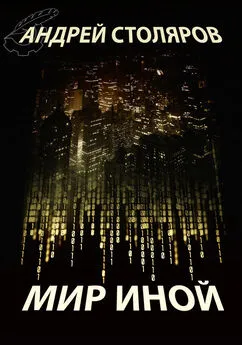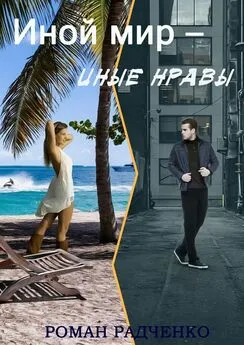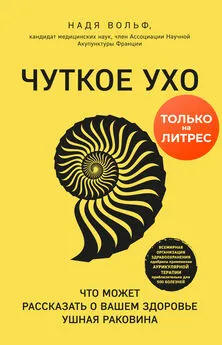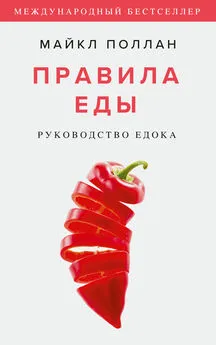Майкл Поллан - Мир иной. Что психоделика может рассказать о сознании, смерти, страстях, депрессии и трансцендентности
- Название:Мир иной. Что психоделика может рассказать о сознании, смерти, страстях, депрессии и трансцендентности
- Автор:
- Жанр:
- Издательство:Литагент АСТ (БЕЗ ПОДПИСКИ)
- Год:2020
- Город:Москва
- ISBN:978-5-17-119981-4
- Рейтинг:
- Избранное:Добавить в избранное
-
Отзывы:
-
Ваша оценка:
Майкл Поллан - Мир иной. Что психоделика может рассказать о сознании, смерти, страстях, депрессии и трансцендентности краткое содержание
Это уникальное сочетание истории, медицины и науки с биографическими эпизодами, захватывающее описание личного опыта, отсылающего к новому рубежу нашего понимания разума, личности и места в мире. Подлинная тема «психоделического травелога» Поллана – не только психоделики, но и неразрешимая загадка человеческого сознания – как в мире, сталкивающим нас со страданиями и удовольствиями, мы можем отыскать смысл в наших жизнях.
Мир иной. Что психоделика может рассказать о сознании, смерти, страстях, депрессии и трансцендентности - читать онлайн бесплатно ознакомительный отрывок
Интервал:
Закладка:
Kaelen, Mendel. “The Psychological and Human Brain Effects of Music in Combination with Psychedelic Drugs.” PhD diss., Imperial College London, 2017.
Kessler, David A. Capture: Unraveling the Mystery of Mental Suffering . New York: Harper Wave, 2016.
Killingsworth, Matthew A., and Daniel T. Gilbert. “A Wandering Mind Is an Unhappy Mind.” Science 330, no. 6006 (2010): 932. doi:10.1126/science.1192439.
Kleber, Herbert D. “Commentary On: Psilocybin Can Occasion Mystical-Type Experiences Having Substantial and Sustained Personal Meaning and Spiritual Significance.” Psychopharmacology 187 (2006): 291–92.
Krebs, Teri S., and Pеl-Шrjan Johansen. “Lysergic Acid Diethylamide (LSD) for Alcoholism: Meta-analysis of Randomized Controlled Trials.” Journal of Psychopharmacology 26, no. 7 (2012): 994–1002. doi:10.1177/0269881112439253.
Kupferschmidt, Kai. “High Hopes.” Science 345, no. 6192 (2014).
Langlitz, Nicolas. Neuropsychedelia: The Revival of Hallucinogen Research Since the Decade of the Brain . Berkeley: University of California Press, 2013.
Lattin, Don. The Harvard Psychedelic Club: How Timothy Leary, Ram Dass, Huston Smith, and Andrew Weil Killed the Fifties and Ushered in a New Age for America . New York: HarperCollins, 2010.
Leary, Timothy. Flashbacks: A Personal and Cultural History of an Era: An Autobiography . New York: G. P. Putnam’s Sons, 1990.
Leary, Timothy. High Priest . Berkeley, Calif.: Ronin, 1995.
Leary, Timothy, and Richard Alpert. “Letter from Alpert, Leary.” Harvard Crimson, 1962.
Leary, Timothy, and James Penner. Timothy Leary, The Harvard Years: Early Writings on LSD and Psilocybin with Richard Alpert, Huston Smith, Ralph Metzler, and Others. Rochester, Vt.: Park Street Press, 2014.
Leary, Timothy, Robert Anton Wilson, George A. Koopman, and Daniel Gilbertson. Neuropolitics: The Sociobiology of Human Metamorphosis . Los Angeles: Starseed/Peace Press, 1977.
Lee, Martin A., and Bruce Shlain. Acid Dreams: The Complete Social History of LSD: The CIA, the Sixties, and Beyond . New York: Grove Press, 1992.
Lieberman, Jeffrey A. Shrinks: The Untold Story of Psychiatry. New York: Little, Brown, 2015.
Lucas, Christopher G., Sophie Bridgers, Thomas L. Griffiths, and Alison Gopnik. “When Children Are Better (or at Least More Open-Minded) Learners Than Adults: Developmental Differences in Learning the Forms of Causal Relationships.” Cognition 131, no. 2 (2014): 284–99. doi:10.1016/j.cognition.2013.12.010.
MacLean, Katherine A., Matthew W. Johnson, and Roland R. Griffiths. “Mystical Experiences Occasioned by the Hallucinogen Psilocybin Lead to Increases in the Personality Domain of Openness.” Journal of Psychopharmacology 25, no. 11 (2011):1453–61. doi:10.1177/0269881111420188.
McHugh, Paul. Review of The Harvard Psychedelic Club, by Don Lattin. Commentary, April 2010.
McKenna, Terence. Food of the Gods: The Search for the Original Tree of Knowledge . New York: Bantam Books, 1992.
Markoff, John. What the Dormouse Said: How the Sixties Counterculture Shaped the Personal Computer Industry . New York: Penguin, 2005.
Moore, Gerald, and Larry Schiller. “The Exploding Threat of the Mind Drug That Got out of Control.” Life, March 25, 1966.
Moreno, Francisco A., Christopher B. Wiegand, E. Keolani Taitano, and Pedro L. Delgado. “Safety, Tolerability, and Efficacy of Psilocybin in 9 Patients with Obsessive-Compulsive Disorder.” Journal of Clinical Psychiatry 67, no. 11 (2006): 1735–40. doi:10.4088/JCP.v67n1110.
Nagel, Thomas. “What Is It Like to Be a Bat?” Philosophical Review 83, no. 4 (1974): 435–50. doi:10.2307/2183914.
Nichols, David E. “Commentary On: Psilocybin Can Occasion Mystical-Type Experiences Having Substantial and Sustained Personal Meaning and Spiritual Significance.” Psychopharmacology 187, no. 3 (2006): 284–86. doi:10.1007/s00213-006-0457-5.
Nichols, David E. “LSD: Cultural Revolution and Medical Advances.” Chemistry World 3, no. 1 (2006): 30–34.
Nichols, David E. “Psychedelics.” Pharmacological Reviews 68, no. 2 (2016): 264–355.
Nour, Matthew M., Lisa Evans, and Robin L. Carhar-Harris. “Psychedelics, Personality and Political Perspectives.” Journal of Psychoactive Drugs (2017): 1–10.
Novak, Steven J. “LSD Before Leary: Sidney Cohen’s Critique of 1950s Psychedelic Drug Research.” History of Science Society 88, no. 1 (1997): 87–110.
Nutt, David. “A Brave New World for Psychology?” Psychologist 27, no. 9 (2014): 658–60. doi:10.1097/NMD.0000000000000113.
Nutt, David. Drugs Without the Hot Air: Minimising the Harms of Legal and Illegal Drugs. Cambridge, England: UIT Cambridge, 2012.
Osmond, Humphry. “On Being Mad.” Saskatchewan Psychiatric Services Journal 1, no. 2
(1952).
Osmond, Humphry. “A Review of the Clinical Effects of Psychotomimetic Agents.” Annals of the New York Academy of Sciences 66, no. 1 (1957): 418–34.
Pahnke, Walter, “The Psychedelic Mystical Experience in the Human Encounter with Death.” Harvard Theological Review 62, no. 1 (1969): 1–22.
“Pass It On”: The Story of Bill Wilson and How the A.A. Message Reached the World . New York: Alcoholics Anonymous World Services, 1984.
Petri, G., P. Expert, F. Turkheimer, R. Carhart-Harris, D. Nutt, P. J. Hellyer, and F. Vaccarino. “Homological Scaffolds of Brain Functional Networks.” Journal of the Royal Society Interface 11, no. 101 (2014).
Piff, Paul K., Pia Dietze, Matthew Feinberg, Daniel M. Stancato, and Dacher Keltner. “Awe, the Small Self, and Prosocial Behavior.” Journal of Personality and Social Psychology 108, no. 6 (2015): 883–99. doi:10.1037/pspi0000018.
Pollan, Michael. “The Trip Treatment.” New Yorker, Feb. 9, 2015.
Preller, Katrin H., Marcus Herdener, Thomas Pokorny, Amanda Planzer, Rainer Krahenmann, Philipp Stдmpfli, Matthias E. Liechti, Erich Seifritz, and Franz X. Vollenweider. “The Fabric of Meaning and Subjective Effects in LSD-induced States Depend on Serotonin 2A Receptor Activation.” Current Biology 27, no. 3 (2017): 451–57.
Presti, David, and Jerome Beck. “Strychnine and Other Enduring Myths: Expert and User Folklore Surrounding LSD.” In Psychoactive Sacramentals: Essays on Entheogens and Religion, edited by Thomas B. Roberts, 125–35. San Francisco: Council on Spiritual Practices, 2001.
Raichle, Marcus E. “The Brain’s Dark Energy.” Scientific American 302, no. 3 (2010): 44–49. doi:10.1038/scientificamerican0310-44.
Raichle, Marcus E., Ann Mary MacLeod, Abraham Z. Snyder, William J. Powers, Debra A. Gusnard, and Gordon L. Shulman. “A Default Mode of Brain Function.” Proceedings of the National Academy of Sciences 98, no. 2 (2001): 676–82. doi:10.1073/pnas.98.2.676.
R.C. “B.C.’s Acid Flashback.” Vancouver Sun, Dec. 8, 2001.
Richards, William, Stanislav Grof, Louis Goodman, and Albert Kurland. “LSD-Assisted Psychotherapy and the Human Encounter with Death.” Journal of Transpersonal Psychology 4, no. 2 (1972): 121–50.
Samorini, Giorgio. Animals and Psychedelics: The Natural World and the Instinct to Alter Consciousness . Rochester, Vt.: Park Street Press, 2002.
Schuster, Charles R. “Commentary On: Psilocybin Can Occasion Mystical-Type Experiences Having Substantial and Sustained Personal Meaning and Spiritual Significance.” Psychopharmacology 187, no. 3 (2006): 289–90. doi:10.1007/s00213-006-0457-5.
Schwartz, Casey. “Molly at the Marriott: Inside America’s Premier Psychedelics Conference.” New York Times, May 6, 2017.
Siff, Stephen. Acid Hype: American News Media and the Psychedelic Experience . Urbana: University of Illinois Press, 2015.
Simard, Suzanne W., David A. Perry, Melanie D. Jones, David D. Myrold, Daniel M. Durall, and Randy Molina. “Net Transfer of Carbon Between Ectomycorrhizal Tree Species in the Field.” Nature 388 (1997): 579–82.
Smith, Huston. Cleansing the Doors of Perception: The Religious Significance of Entheogenic
Plants and Chemicals. New York: Jeremy P. Tarcher/Putnam, 2000.
Smith, Huston. The Huston Smith Reader . Edited by Jeffery Paine. Berkeley: University of California Press, 2012.
Smith, Robert Ellis. “Psychologists Disagree on Psilocybin Research.” Harvard Crimson, March 15, 1962.
Solomon, Andrew. The Noonday Demon: An Atlas of Depression . New York: Scribner, 2015.
Srinivasan, Mandyam V. “Honey Bees as a Model for Vision, Perception, and Cognition.” Annual Review of Entomology 55, no. 1 (2010): 267–84. doi:10.1146/annurev.ento.010908.164537.
Stamets, Paul. Psilocybin Mushrooms of the World . Berkeley, Calif.: Ten Speed Press, 1996.
Stevens, Jay. Storming Heaven: LSD and the American Dream . New York: Grove Press, 1987.
Stolaroff, Myron J. The Secret Chief Revealed . Sarasota, Fla.: Multidisciplinary Association for Psychedelic Studies, 2004.
Strauss, Neil. Everyone Loves You When You’re Dead: Journeys into Fame and Madness . E-Book, 2011.
Sullivan, Walter. “The Einstein Papers. A Man of Many Parts,” New York Times, March 29, 1972.
Sutton, Gregory P., Dominic Clarke, Erica L. Morley, and Daniel Robert. “Mechanosensory Hairs in Bumblebees ( Bombus terrestris ) Detect Weak Electric Fields.” Proceedings of the National Academy of Sciences 113, no. 26 (2016): 7261–65. doi:10.1073/pnas.1601624113.
Tennyson, Alfred. “Luminous Sleep.” The Spectator , Aug. 1, 1903.
Tierney, John. “Hallucinogens Have Doctors Tuning In Again.” New York Times, April 12, 2010.
U.S. Congress Senate Subcommittee on Executive Reorganization of the Committee on Government Operations: Hearing on the Organization and Coordination of Federal Drug Research and Regulatory Programs: LSD. 89th Cong., 2nd sess., May 24–26, 1966.
Vollenweider, Franz X., and Michael Kometer. “The Neurobiology of Psychedelic Drugs: Implications for the Treatment of Mood Disorders.” Nature Reviews Neuroscience 11, no. 9 (2010): 642–51. doi:10.1038/nrn2884.
Vollenweider, Franz X., Margreet F. I. Vollenweider-Scherpenhuyzen, Andreas Bäbler, Helen Vogel, and Daniel Hell. “Psilocybin Induces Schizophrenia-Like Psychosis in Humans via a Serotonin-2 Agonist Action.” NeuroReport 9, no. 17 (1998): 3897–902. doi:10.1097/00001756-199812010-00024.
Wasson, R. Gordon. “Drugs: The Sacred Mushroom.” New York Times, Sept. 26, 1970.
Wasson, R. Gordon. “Seeking the Magic Mushroom.” Life, May 13, 1957, 100–120.
Wasson, R. Gordon, Albert Hofmann, and Carl A. P. Ruck. The Road to Eleusis: Unveiling the Secret of the Mysteries . Berkeley, Calif.: North Atlantic Books, 2008.
Wasson, Valentina Pavlovna, and R. Gordon Wasson. Mushrooms, Russia, and History . Vol. 2. New York: Pantheon Books, 1957.
Watts, Rosalind, Camilla Day, Jacob Krzanowski, David Nutt, and Robin Carhart-Harris. “Patients’ Accounts of Increased ‘Connectedness’ and ‘Acceptance’ After Psilocybin for Treatment-Resistant Depression.” Journal of Humanistic Psychology 57, no. 5 (2017):520–64. doi:10.1177/0022167817709585.
Читать дальшеИнтервал:
Закладка:
